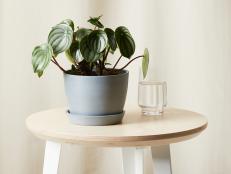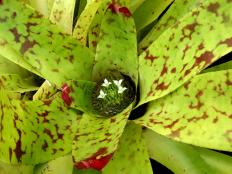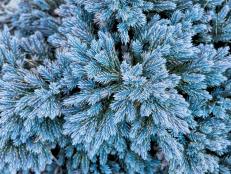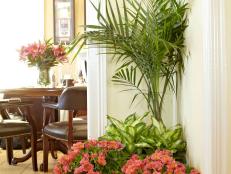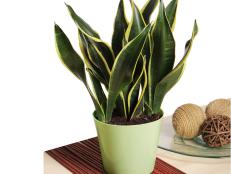How to Grow and Care for Norfolk Island Pine
Norfolk Island pines are popular houseplants and handsome landscape plants in warm winter areas. For a living Christmas tree, dress Norfolk pine with bows and small ornaments.

The Sill
If you're caring for a Norfolk Island pine indoors, give it bright indirect to medium light.

What is Norfolk Island Pine?
Norfolk Island pine is a beautiful evergreen that can be kept as a houseplant or grown outdoors year-round in USDA Gardening Zones 10 and 11. Despite its name, the Norfolk Island pine is a conifer in the Araucariaceae family and not a true pine.
Botanical Name: Araucaria heterophylla
Common Name: Norfolk Island Pine, Australian pine
Bloom Time: Bears cones, not blooms, at 10-15 years old
Light Needs: Bright, indirect light indoors; full sun to partial shade outdoors
Hardiness Zones: 10-11
Height and Width: 3 to 20 feet tall indoors
Growth Rate: Slow
In its native South Pacific habitat, Norfolk Island Pine can grow to 200 feet tall. But when kept as a houseplant, Araucaria heterophylla usually tops out at 3 to 8 feet tall — and it can take up to 10 years to reach that height. When it's grown outdoors in subtropical parts of North America, Norfolk Island Pine can reach 60 to 80 feet tall. These attractive conifers can be decorated to look like Christmas trees during the holidays. With the right care, they can live for many years.

Costa Farms
For a tabletop holiday tree, decorate a Norfolk Island pine with ornaments, bows and fairy lights.
Norfolk Island Pine Care
Light Needs
Six hours of bright, indirect sun each day is ideal when you're caring for a Norfolk Island pine indoors, but this houseplant also grows in medium light. Turn a potted Araucaria heterophylla regularly so it doesn't lean in one direction. Outdoor trees need full sun but appreciate some afternoon shade in hot summer climates.
Soil
The New York Botanical Garden plants Norfolk pines, which are acid-loving plants, in a well-draining mix of equal parts potting soil, sand or perlite and peat moss combined with a tablespoon of bone meal. A potting mix made for succulents is fine, too. Outdoors, Norfolk pines do best in rich, sandy soil mixed with peat.
Water
Don't let your Norfolk Island pine dry out completely and don't keep it constantly wet. Let the soil dry to about an inch deep between waterings. Empty the saucer under a potted Araucaria heterophylla plant so the roots don't sit in water.
Temperature and Humidity
Tropical Norfolk Island pines need humid air and warm temperatures, preferably around 50% humidity and 65 to 70 degrees. Increase the humidity around your plant by misting the foliage, running a humidifier or keeping it on top of pebbles in a tray filled with a little water. Don't let the plant's roots touch the water or the roots may rot. Grouping Norfolk pine with other plants can also help. Avoid placing Araucaria heterophylla near drafts and vents.
Fertilizer
While your Norfolk Island pine is actively growing from spring to fall, feed it with a liquid houseplant fertilizer or a fertilizer made for acid-loving plants like azaleas. Use as directed on the label.
Growing Norfolk Island Pine
Propagation Methods for Norfolk Island Pine
Propogate Norfolk Island pine from seeds. Sow them on a moistened mix of sand and peat and keep them in bright, indirect light indoors or half sun and half shade outdoors. Mist them lightly, but don't cover them and they'll germinate in 10 to 15 days. When you see a tap root and new growth, water as needed to keep the seedlings moist.
Potting and Repotting Tips for Norfolk Island Pine
Repot about every two or three years in the spring when roots grow out of the drainage holes or appear on the soil's surface. Go up one pot size at a time, always using a container with drainage holes.
Pruning Techniques for Norfolk Island Pine
Pruning isn't recommended unless you're removing diseased or dead branches or brown tips. If your tree gets too tall for your space, give it to someone with a higher ceiling or add it to your compost bin and start over with a new one.
Some gardeners shorten Araucaria heterophylla by cutting back the main stem just above a whorl of branches. This isn't recommended because, while new growth will sprout from the cut area, the tree will look misshapen. For this reason, propagating Norfolk pine from cuttings isn't recommended, either.
Caring for a Norfolk Island Pine
Common Problems and Solutions for Norfolk Island Pine
Insect pests like aphids, mealybugs, mites, whiteflies and scale can infest Norfolk Island pine. Try knocking them off small trees with a spray of tepid water from your kitchen sink or shower. Outdoors, use a garden hose. For big infestations, apply neem oil or an insecticide as directed on the product.
Avoid overwatering to help prevent or manage anthracnose, a fungal disease that causes dead areas and can eventually kill the entire tree.
Troubleshooting Common Problems with Norfolk Island Pine
Some needle and branch drop is normal with Norfolk pines, but it shouldn't be excessive. Several issues can cause problems, including low light; too much, too little or irregular watering; low humidity; or improper fertilizing. Adjust your growing practices and see what works.
- Lower branches that turn brown and drop is likely the result of not enough light and/or water
- Crispy, brown tips and curling needles is caused by low humidity
- Droopy branches? Water thoroughly when the top inch of soil is dry and don't let the plant stand in water.
FAQs:
Is Norfolk Island pine a good houseplant?
Norfolk Island pine is a great houseplant that can live for many years with the right care.
Can I put my Norfolk Island pine outside?
While these tropicals can't take temperatures below 35 degrees — and it's best not to let them go below 50 degrees — a potted Araucaria heterophylla Norfolk Island pine can go outside after all danger of frost has passed. Unless you're in Zones 10 or 11, move it back indoors before frost.
Do Norfolk Island pines like sun or shade?
Grown outdoors, these trees can take full sun but appreciate partial shade to shade in areas with hot, intense afternoon sun.
Where should I place a Norfolk Island pine in my house?
Place a small Araucaria heterophylla plant on a tabletop or desk near a bright window. Use larger specimens as floor plants.
Are Norfolk Island pines toxic to pets?
Yes. Keep them out of reach of pets and other animals.
Are there other varieties or cultivars of Norfolk Island pine?
There aren't any currently on the market.






